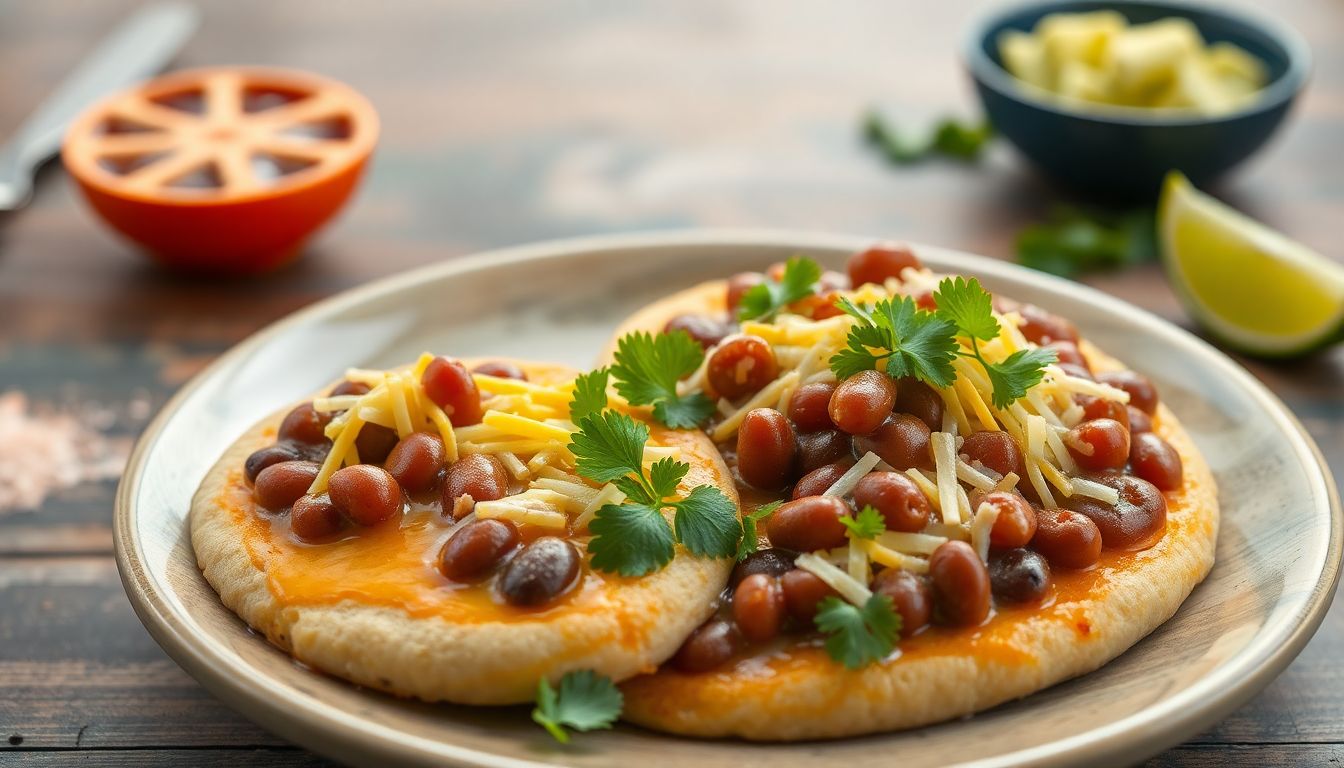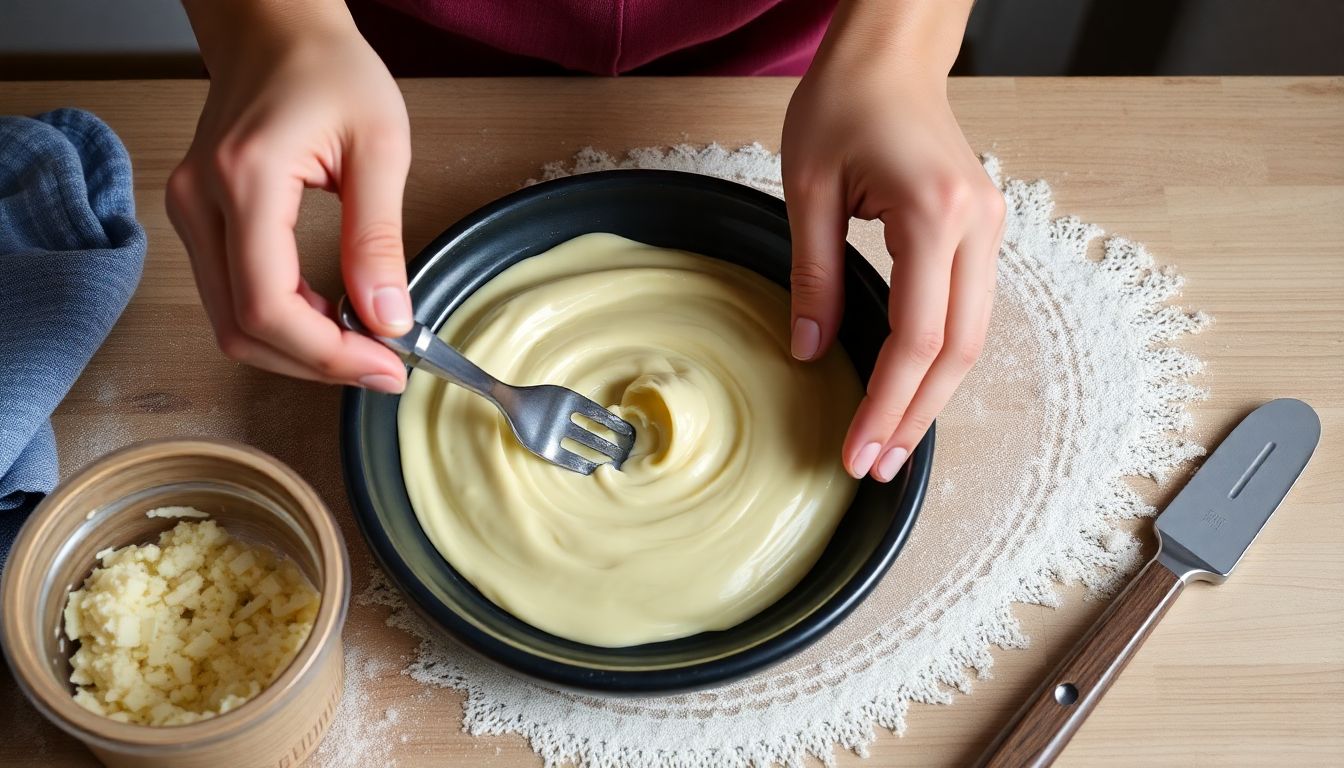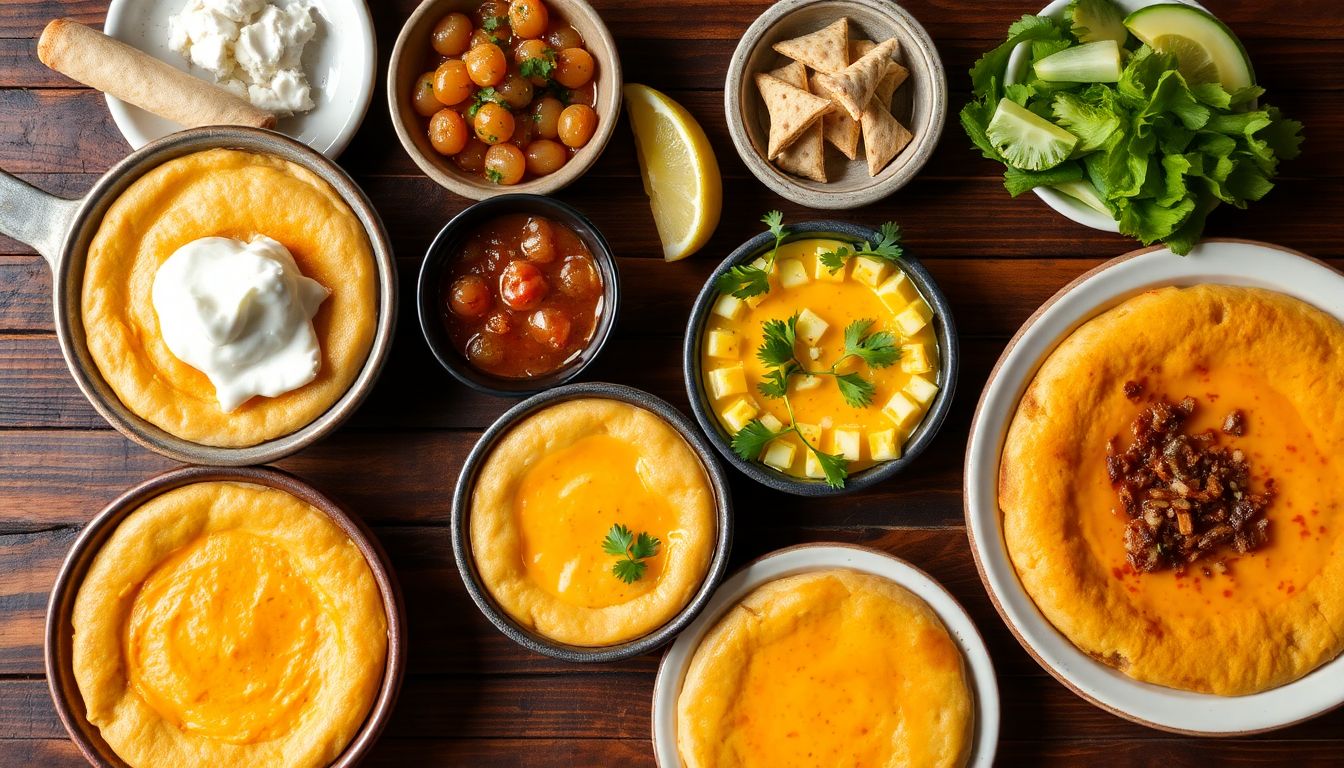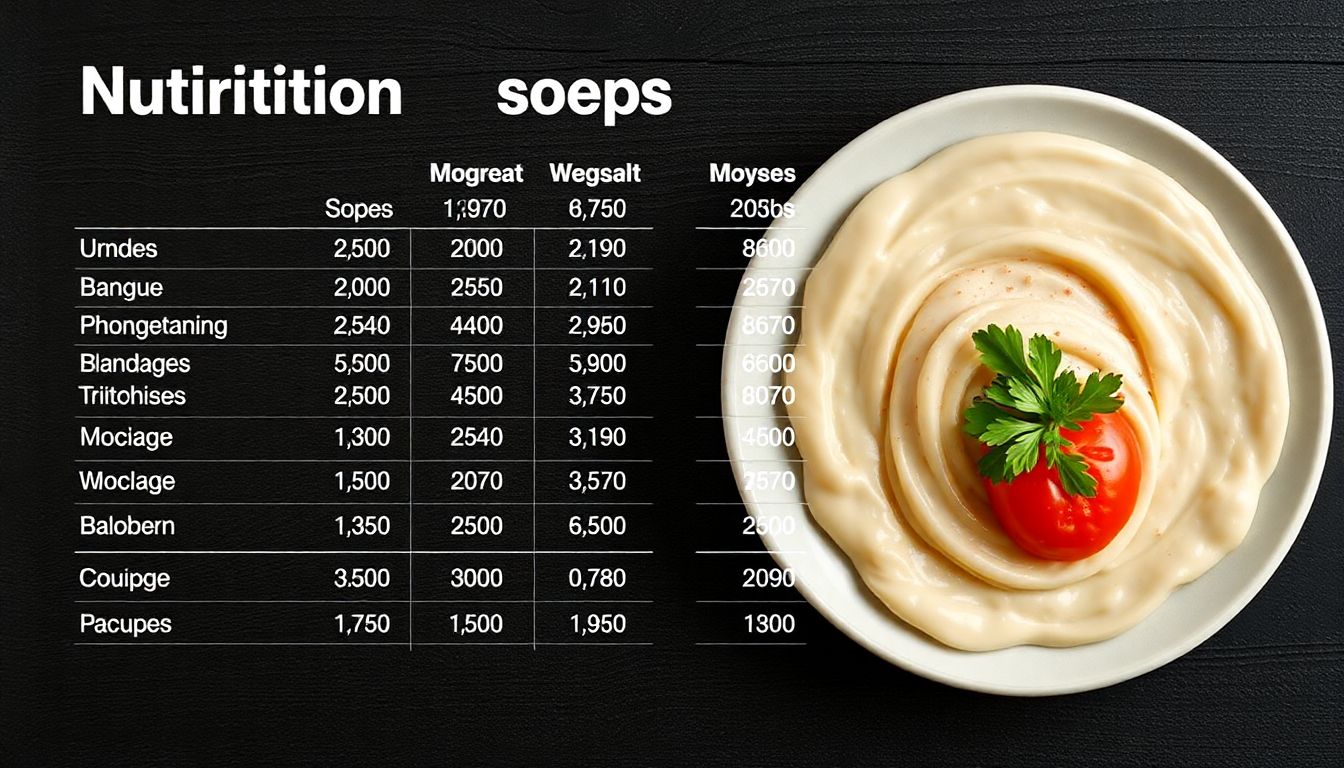The culinary landscape of Mexico is as vibrant and diverse as its culture, and sopes stand out as a quintessential example of this. These delightful creations, often overshadowed by their more famous cousins—tacos and burritos—deserve a spotlight in the pantheon of Mexican cuisine. A sope is not just a dish; it’s a canvas of rich flavors and textures that tells a story of tradition, community, and the sheer joy of eating. As someone who has spent countless hours savoring and crafting these delectable delights, I can attest to their ability to bring people together, transcending the boundaries of a simple meal.
Learn About Mexican Sopes
Discover the essential details and tips for making delicious Mexican sopes.
– Sopes are traditional Mexican thick tortillas, typically topped with beans, meat, and various garnishes.
– Key ingredients include masa dough, refried beans, and your choice of toppings like lettuce and salsa.
– To make sopes successfully, shape the masa into small discs, cook them on a skillet, and add fillings to create a satisfying meal.
What Are Sopes?
Sopes are thick corn tortillas with a raised edge, creating a perfect vessel for a variety of toppings. Originating from the heart of Mexico, these delightful discs of masa (corn dough) are a testament to the country’s rich indigenous culinary heritage. Unlike the more famous tortilla, which is often used as a wrap, the sope’s structure is inherently designed to hold toppings, much like an edible bowl.

The beauty of sopes lies in their versatility. They can be topped with an array of ingredients, from refried beans and shredded lettuce to crumbled cheese, salsa, and crema. Each bite offers a harmonious blend of flavors and textures—crisp, creamy, spicy, and savory—making sopes an irresistible treat. Whether enjoyed as a hearty breakfast, a midday snack, or a satisfying dinner, sopes are a true celebration of Mexican culinary artistry.
What You’ll Need
Creating the perfect sope requires a few essential tools and ingredients. First and foremost, you will need masa harina, a finely ground corn flour that serves as the foundation of the sope. A tortilla press is highly recommended to achieve the right thickness and shape, though a rolling pin can suffice in a pinch.
Aside from masa harina, you’ll need a reliable skillet or griddle for cooking the sopes to perfection. Cast iron is often preferred for its ability to maintain consistent heat, ensuring a crisp exterior and tender interior. Additionally, a spatula for flipping and a clean kitchen towel to rest the sopes as they cook are indispensable.
Finally, a selection of fresh ingredients for your toppings is key. This includes refried beans, cooked meat (such as chicken or beef), lettuce, cheese, salsa, and crema. Each component should be prepared and ready to go, ensuring a seamless assembly process once your sopes are cooked.
A Family Tradition: Making Sopes Together
Growing up in a Mexican household, sopes were much more than just a meal; they were a symbol of family and tradition. I vividly remember the first time I helped my grandmother, Abuela Rosa, prepare them for a Sunday family gathering. I was around eight years old, and the kitchen was filled with the comforting aroma of spices and fresh masa.
As Abuela mixed the masa, she explained the importance of using the right consistency. “Too dry, and they won’t hold together; too wet, and they’ll fall apart,” she said, her hands expertly kneading the dough. My young hands struggled to mimic her technique, but she patiently guided me through each step.
Once the masa was ready, we shaped it into small rounds and pressed them into thick discs. Abuela taught me to pinch the edges to create a little wall, ensuring the toppings wouldn’t spill over. As we cooked them on the hot griddle, the sound of sizzling masa filled the air, and my excitement grew.
When it was time to top the sopes, we used a variety of ingredients: refried beans, tender pork, fresh lettuce, and a sprinkle of cheese. I remember being amazed at how something so simple could taste so delicious.
That day, I learned that making sopes was not just about the food; it was about gathering around the table with loved ones, sharing stories, and passing down traditions. Now, as I make sopes with my own children, I hope to instill in them the same love and appreciation for family that my Abuela instilled in me.
How to Make Sopes
The process of making sopes is an exercise in patience and love for authentic Mexican cooking. Begin by mixing masa harina with water and a pinch of salt, kneading until you achieve a smooth, pliable dough. Divide the dough into small balls, each roughly the size of a golf ball.
Using your tortilla press or rolling pin, flatten each ball into a disc about 1/4 inch thick. The key is to maintain a uniform thickness to ensure even cooking. Once shaped, transfer the discs to a preheated skillet, cooking each side for about two minutes until they develop a light golden color.
Here comes the crucial step: while the sopes are still warm, pinch the edges to create a rim. This raised edge is what makes sopes unique, allowing them to hold their delicious toppings without spilling. With the base prepared, you’re ready to assemble your masterpiece.
Insider Tip: Achieving the perfect consistency for your masa dough is crucial. If the dough cracks, it may be too dry—add a little more water and knead again. If it’s too sticky, incorporate more masa harina until it’s just right.
Tips for Success
Crafting the perfect sope is an art that requires attention to detail and a few insider tricks. Firstly, the dough must be just right—not too dry, not too wet. Consistency is key, and a little practice goes a long way. A well-hydrated dough ensures that your sopes will be tender yet sturdy enough to hold their toppings.

Cooking temperature is another critical factor. A medium-high heat is ideal to achieve a crisp exterior without burning. Too high a heat will leave the inside undercooked, while too low a temperature will result in a chewy, rather than crunchy, texture.
When it comes to toppings, balance is everything. A generous spread of refried beans serves as a hearty base, while the addition of protein, fresh vegetables, and a drizzle of crema provides contrast and depth. Don’t be afraid to experiment with different combinations to discover your perfect sope.
Insider Tip: To save time, prepare your toppings in advance. This way, once your sopes are ready, you can assemble them quickly and enjoy them while they’re still warm and fresh.
How to Serve Sopes
Sopes are as versatile in their serving as they are in their toppings. Traditionally, they are served hot right off the skillet, allowing the warm masa to complement the cool, fresh toppings. They can be presented on a platter for a communal dining experience or individually plated for a more sophisticated touch.
Pairing sopes with the right accompaniments can elevate the dining experience. A refreshing side of pickled vegetables, known as escabeche, provides a tangy counterbalance to the rich and savory flavors of the sope. Additionally, a side of Mexican rice or a light salad can complete the meal.

For a festive occasion, consider setting up a sope bar where guests can customize their own creations. Provide a variety of toppings and salsas, allowing each person to tailor their sope to their taste. This interactive setup not only enhances the dining experience but also encourages exploration of flavors and textures.
Insider Tip: Serve your sopes with a chilled Mexican beer or a refreshing agua fresca. The cool beverages complement the warm, savory sopes and provide a refreshing contrast.
Ingredients
The ingredients for sopes are simple yet impactful. Here’s a list to get you started:
- Masa Harina: The foundation of the sope, providing its distinct corn flavor.
- Water: Essential for hydrating the masa harina.
- Salt: Enhances the natural flavors of the masa.
- Vegetable Oil: For cooking, ensuring a crisp texture.
- Refried Beans: A classic topping that adds creaminess and flavor.
- Cooked Meat: Chicken, beef, or pork are popular choices.
- Lettuce: Fresh and crisp, adding a refreshing crunch.
- Cheese: Queso fresco or cotija cheese, for a salty, crumbly addition.
- Salsa: Adds spice and acidity, brightening the dish.
- Crema: A rich, tangy topping that ties everything together.
Directions
- Prepare the Dough: In a large bowl, combine masa harina, water, and salt. Mix until a smooth dough forms, adjusting with more water or masa harina as needed.
- Shape the Sopes: Divide the dough into equal-sized balls. Flatten each ball using a tortilla press or rolling pin to form a disc about 1/4 inch thick.
- Cook the Sopes: Preheat a skillet over medium-high heat. Cook each sope for about two minutes per side until golden and slightly crispy.
- Form the Rim: While still warm, pinch the edges of each sope to create a raised rim.
- Assemble the Sopes: Spread a layer of refried beans on each sope. Add your desired toppings, such as cooked meat, lettuce, cheese, salsa, and crema.
- Serve and Enjoy: Serve the sopes immediately with your choice of sides and beverages.
Insider Tip: Keep cooked sopes warm by covering them with a clean kitchen towel while you finish assembling the remaining batch. This ensures they remain soft and pliable until served.
Nutrition Information
Understanding the nutritional profile of sopes can help you balance indulgence with mindfulness. On average, a sope with basic toppings contains approximately:
- Calories: 200-250 per sope
- Protein: 7-10 grams, depending on the type of meat used
- Carbohydrates: 25-30 grams, primarily from the masa
- Fat: 8-12 grams, influenced by the amount of cheese and crema
- Fiber: 4-6 grams, thanks to the beans and masa

While sopes can be calorie-dense, they also provide essential nutrients such as fiber, protein, and various vitamins and minerals from fresh toppings. Moderation and mindful choice of toppings can ensure a balanced meal that satisfies both the palate and nutritional needs.
In conclusion, sopes are more than just a dish; they are a celebration of Mexican culinary tradition and creativity. By understanding their origins, perfecting their preparation, and experimenting with toppings, you can create a dish that is uniquely yours. Embrace the joy of cooking and sharing sopes, and let their flavors transport you to the vibrant heart of Mexico